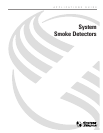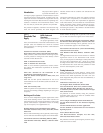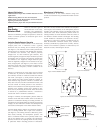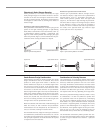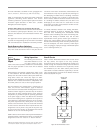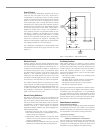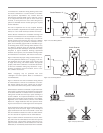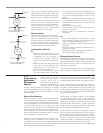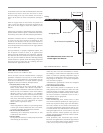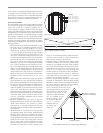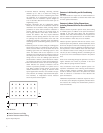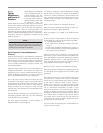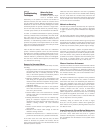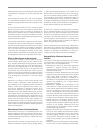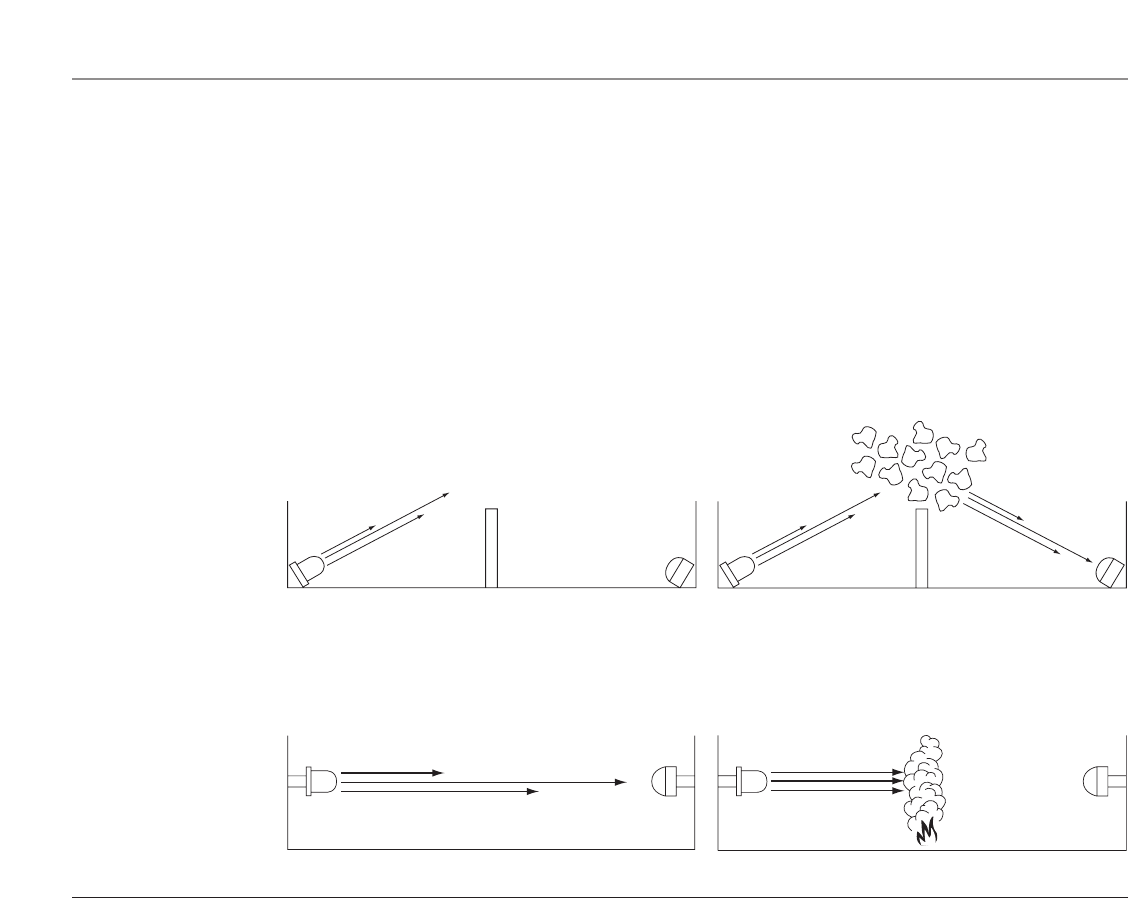
APPLICATIONS GUIDE: SYSTEM SMOKE DETECTORS
4
Photoelectric Smoke Detector Operation
Smoke produced by a fire affects the intensity of a light
beam passing through air. The smoke can block or obscure
the beam. It can also cause the light to scatter due to reflec-
tion off the smoke particles. Photoelectric smoke detectors
are designed to sense smoke by utilizing these effects of
smoke on light.
Photoelectric Light Scattering Smoke Detector
Most photoelectric smoke detectors are of the spot type and
operate on the light scattering principle. A light-emitting
diode (LED) is beamed into an area not normally “seen” by
a photosensitive element, generally a photodiode. (See
Figure 6.) When smoke particles enter the light path, light
strikes the particles (Figure 7) and is reflected onto the pho-
tosensitive device causing the detector to respond.
Photoelectric Light Obscuration Smoke Detector
Another type of photoelectric detector, the light obscura-
tion detector, employs a light source and a photosensitive
receiving device, such as a photodiode (see Figure 8).
When smoke particles partially block the light beam
(Figure 9), the reduction in light reaching the photosensi-
tive device alters its output. The change in output is sensed
by the detector’s circuitry, and when the threshold is
crossed, an alarm is initiated. Obscuration type detectors
are usually of the projected beam type where the light
source spans the area to be protected.
Smoke Detector Design Considerations
Smoke detectors are based on simple concepts, but certain
design considerations need to be observed. They should
produce an alarm signal when smoke is detected, but
should minimize the impact of an unwanted signal which
can arise from a variety of causes. In an ionization detec-
tor, dust and dirt can accumulate on the radioactive source
and cause it to become more sensitive. In a photoelectric
detector, light from the light source may be reflected off the
walls of the sensing chamber and be seen by the photo-
sensitive device when no smoke is present. The entrance of
insects, dirt, drywall dust, and other forms of contamina-
tion into the sensing chamber can also reflect light from
the light source onto the photosensitive device.
Electrical transients and some kinds of radiated energy can
affect the circuitry of both ionization and photoelectric
smoke detectors and be interpreted by the electronic cir-
cuitry to be smoke, resulting in nuisance alarms.
The allowable sensitivity ranges for both types of detectors
are established by Underwriters Laboratories, Inc. and all
are verified by their performance in fire tests. Regardless of
their principle of operation all smoke detectors are required
to respond to the same test fires.
Considerations in Selecting Detectors
The characteristics of an ionization detector make it more
suitable for detection of fast flaming fires that are charac-
terized by combustion particles in the 0.01 to 0.4 micron
size range. Photoelectric smoke detectors are better suited
to detect slow smoldering fires that are characterized by
particulates in the 0.4 to 10.0 micron size range. Each type
of detector can detect both types of fires, but their respec-
tive response times will vary, depending on the type of fire.
Because the protected buildings normally contain a variety
of combustibles, it is often very difficult to predict what
size particulate matter will be produced by a developing
fire. The fact that different ignition sources can have dif-
ferent effects on a given combustible further complicates
the selection. A lighted cigarette, for example, will usually
produce a slow smoldering fire if it is dropped on a sofa or
bed. However, if the cigarette happens to fall upon a news-
paper on top of a sofa or bed, the resulting fire may be
characterized more by flames than by smoldering smoke.
The innumerable combustion profiles possible with vari-
ous fire loads and possible ignition sources make it difficult
to select the type of detector best suited for a particular
application.
Light Source Light Sensitive Device
Light Source Light Sensitive Device
Light Source Light Sensitive Device
Light Source Light Sensitive Device
Figure 6: Light Scattering Detector
Figure 7: Light Scattering Detector with Smoke
Figure 8: Light Obscuration Detector
Figure 9: Light Obscuration Detector with Smoke



